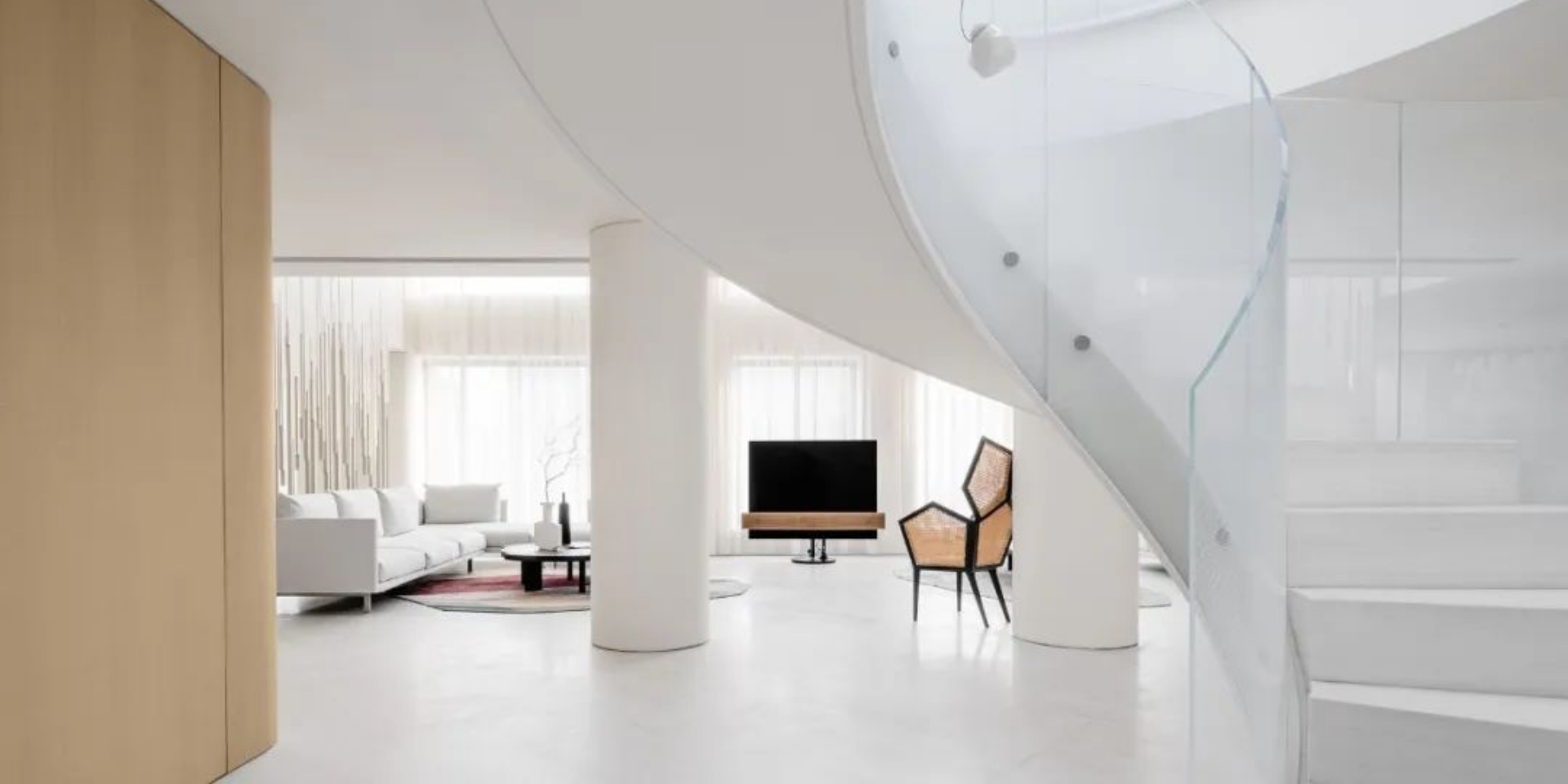A conversation with Mao Hua of EK Design | Designing for "conflict" and "integration" in diversity and inclusion
#Dialogue
Mao Hua joined Shenzhen-based practice YuQiang & Partners Interior Architects Studio in 2005. In 2021, she founded EK Design, a brand under the firm. She shares the importance of cross-cultural communication to creativity, why theatrical, visually stimulating interiors are trending in China and the value of specialization.
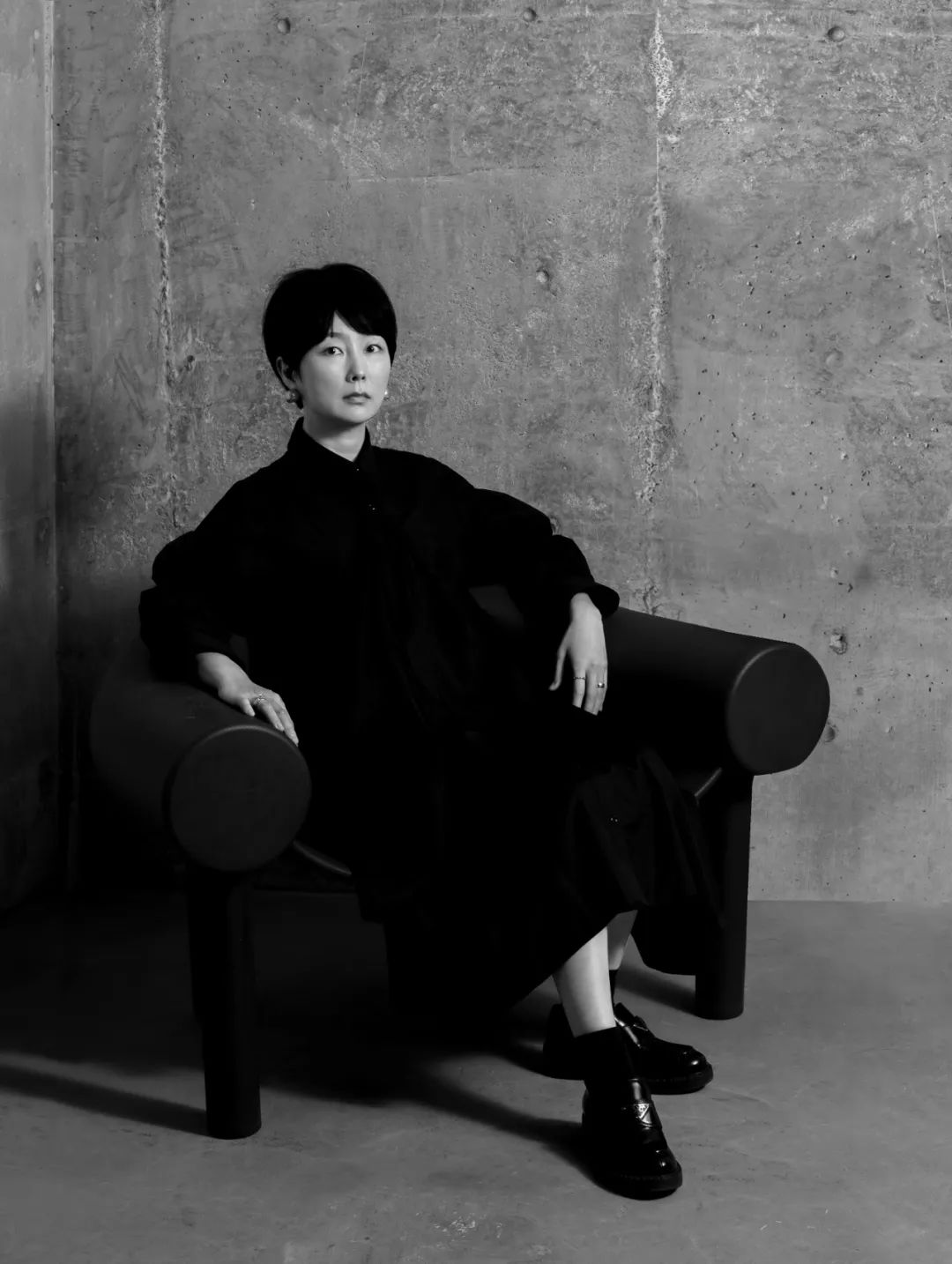
MAO Hua
Founder of EK Design, and PP Design Gallery
Design Director of YuQiang & Partners Interior Architects Studio
#01
Think about the "self"
FRAME:How did your international academic experience in environmental art design inform your professional experience?
Studying abroad enabled me to reach out to people from different backgrounds and countries, and to get access to different cultures. This experience made me more open-minded and inclusive, brought new inspiration to my life and work, and helped me to gain deeper insights into design.
There was a period of time when I found it hard to resonate with foreign designs sometimes and even felt strange about some seemingly bizarre design methods. For instance, I found that bedrooms in some European countries are extremely cramped with an unusual layout on the plane, but later I learned that this was resulted from local culture and living habits. Due to the compact living space in those regions, such “unconventional” designs solved local housing problems whilst also responding to people’s living habits. It was through communication that I got to understand those cultural differences with a more inclusive mindset.
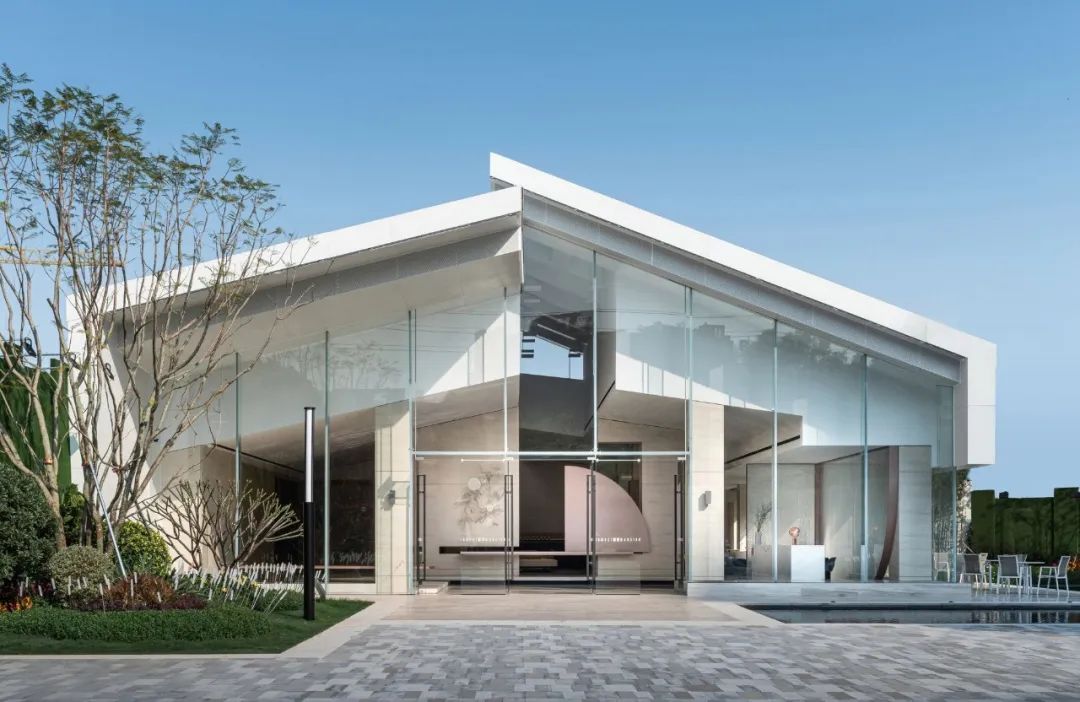
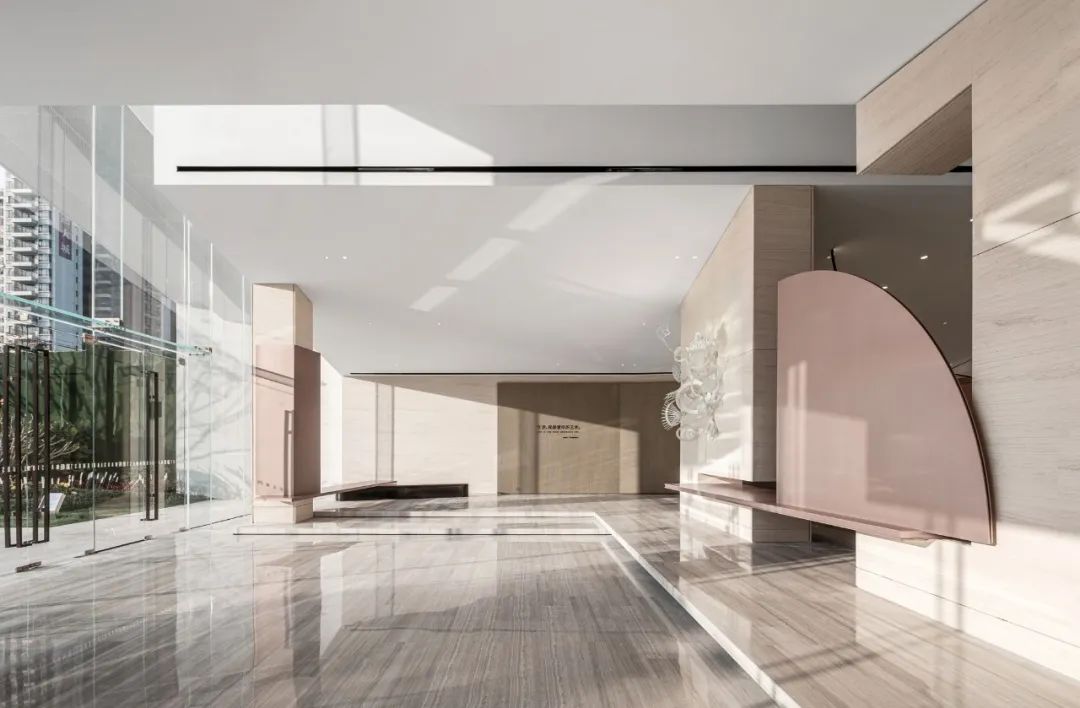
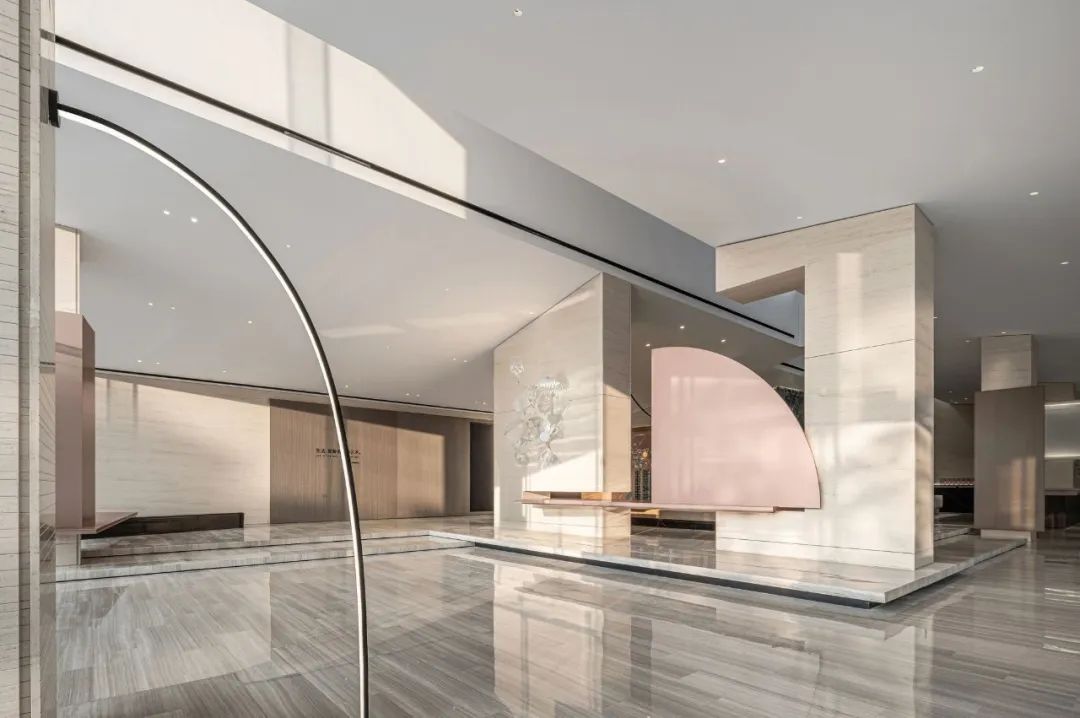
Dongguan Inmost Mansion Sales Center ©Ingallery
The cultural communication and collision I experienced during studying abroad stimulated me to think about “what we have” — what are the highlights and core values of culture? What are our strengths distinguished from others? And how to confidently express and show our designs on the international stage? Without the overseas experience, I might not have gained those deep insights. Currently, I focus more on digging into the interesting parts of culture, and work to draw on more of our own characteristics while learning about others.
All sorts of designs can be reasonable, as design is intended to solve problems and serve people’s life. For designers, communication helps open our mind to new things and different opinions, and keep up with trends. It is vital for us to constantly draw inspiration from diverse cultures, and then to reflect, improve and make progress.


Dongguan Inmost Mansion Sales Center ©Ingallery
FRAME:What motivated you to start EK Design – and what’s its relationship with YuQiang & Partners?
It has been 17 years sinceI joined YuQiang& Partners in 2005. The practice is an open platform for a group of designers who pursue creativity to work together. This is attractive to me.
YuQiang& Partners mainly serves clients in the real estate industry, and specializes in residence and office design solutions. For the purpose of approaching more diversified project typologies and create some “different”designs, I established EK Design.
At EK Design, we work on a variety of project types, and have more freedom to fully unleash imagination and creativity. We are able to express different cultures in diversified ways, without constraints or limitation of styles, and we tend to conveying “conflicts” and “integration” in design. We seek “harmony in diversity”, and always keep an “avant-garde” mentality.

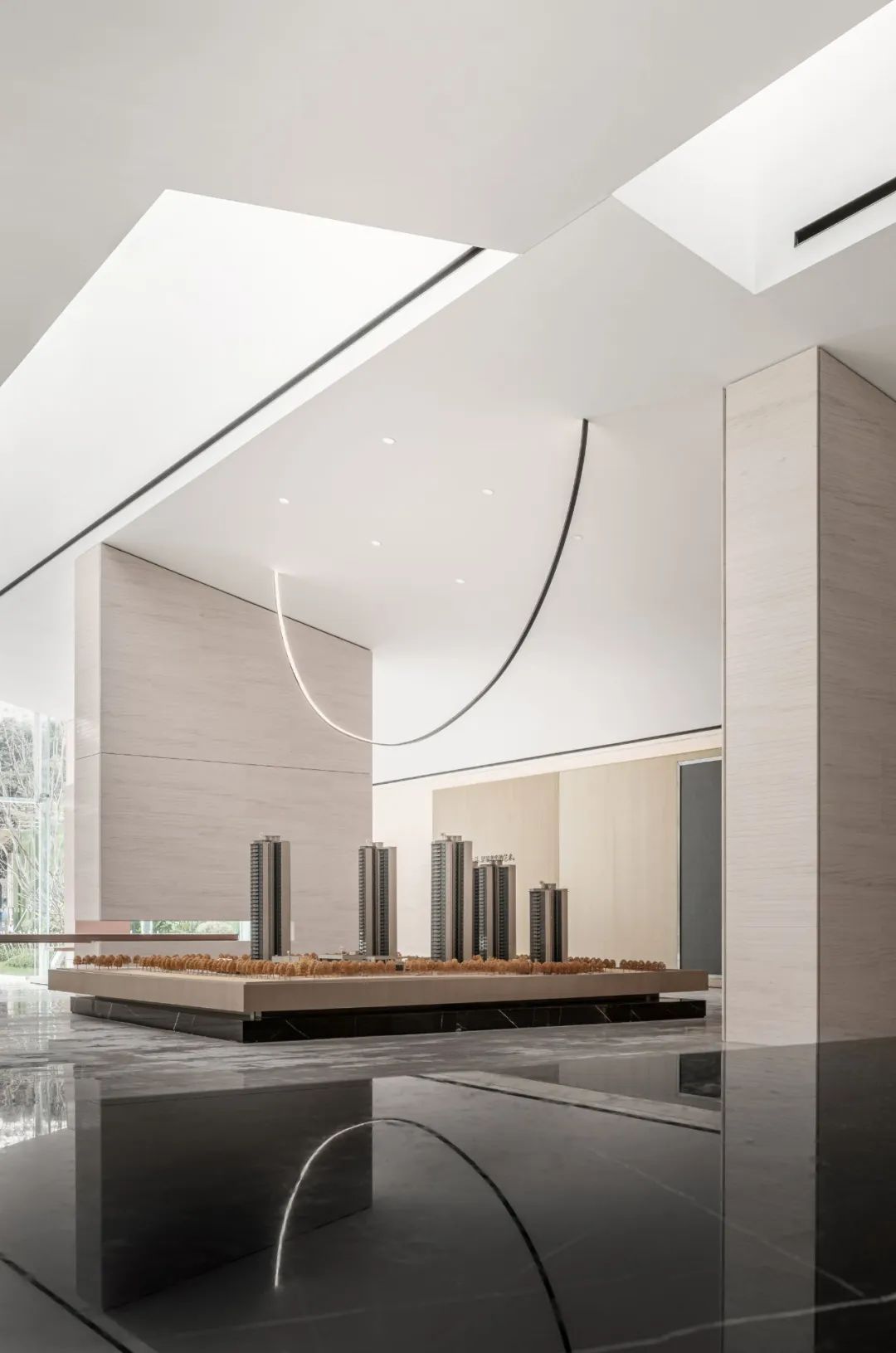
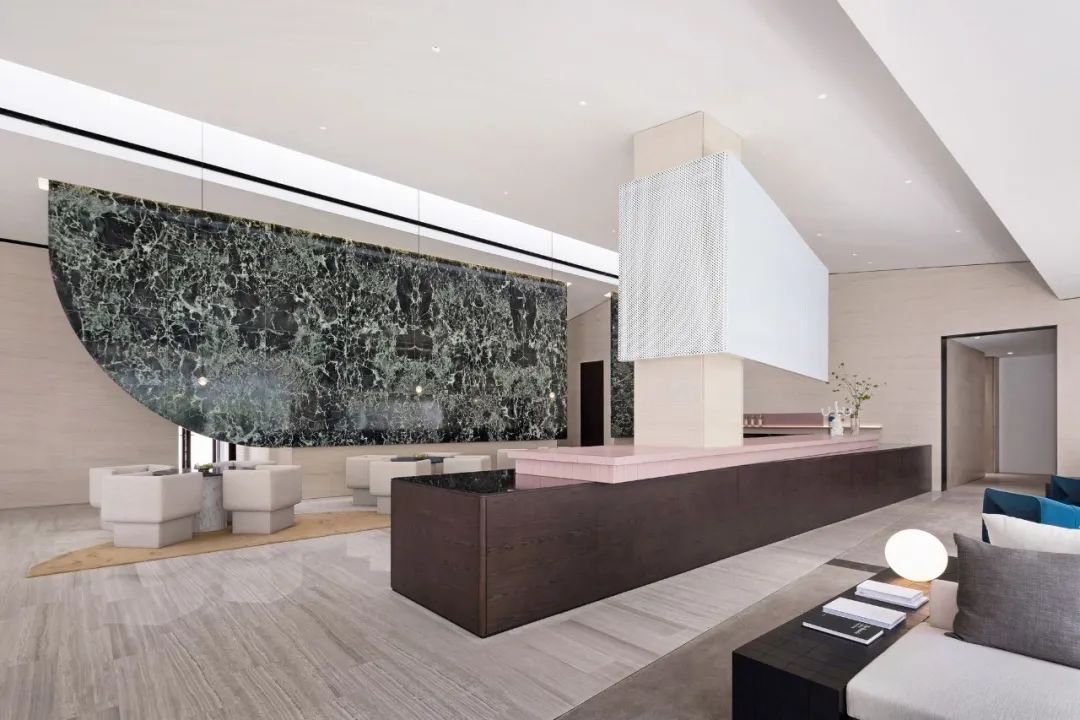
Dongguan Inmost Mansion Sales Center ©Ingallery
#02
"Diversity" and "Drama"
FRAME:Your team at EK Design has a wide range of backgrounds. Why is multidisciplinary experience important to the company, and the design industry in general?
I’ve always insisted that we should focus more on the personal strengths of each individual. Actually, I care more about whether one’s forte stands out rather than shortcomings. One with a prominent, special strong point is what EK team needs. I appreciate people with unique characteristics. At EK, we attach great importance to collaboration. We bring people with different backgrounds and advantages together to contribute to their respective specialized fields, so as to create synergy.

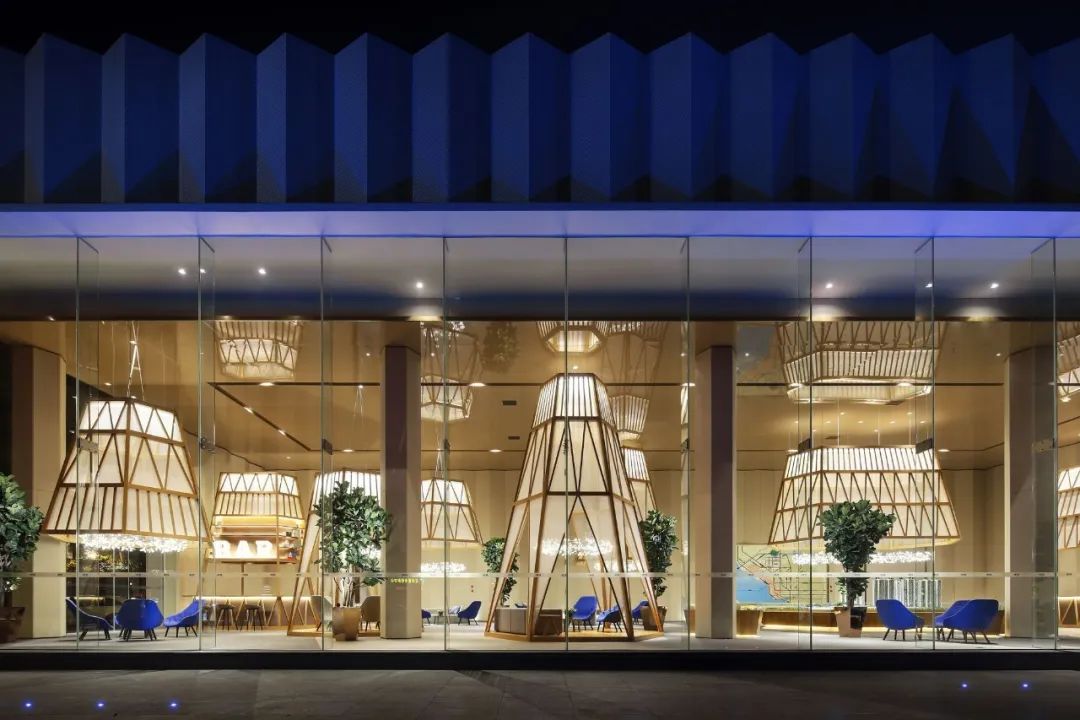
Dongguan Inmost Mansion Sales Center ©Ingallery
Besides interior design, EK’s business scope also involves art, architectural design, product design, graphic design, and branding planning, etc. A multi-disciplinary team is essential as we’re engaging in increasing fields. Currently, we have involved architects in our team, and will further bring in landscape designers and product design professionals in the future. In this sense, EK Design has gone beyond interior design.
With a multi-disciplinary background, our people offer varied perspectives and opinions on a same issue. Those perspectives are often novel, unique, and bring new design inspiration, though may not be mature. This is the constructive role that I think a multi-disciplinary team can play.


Dongguan Inmost Mansion Sales Center ©Ingallery
FRAME:Theatrical, dramatic aesthetics – characteristics you describe your work with seem to be increasingly more prominent in Chinese design. Why do you think that is?
The interior design sector in China has been greatly driven by the booming real estate industry. In some cases, the popular "dramatic" aesthetics in China is often interpreted as "eye-catching" design. To respond to real estate developers’ preferences, or the demand for promoting sales, designers sometimes have to create some special scenes, which has led to the trend of "eye-catching" design.
However, such "eye-catching" design is what the "dramatic" aesthetics that EK seeks. As choosing to read a book, a story or listen to music, I personally prefer works with conflicts and contradictions. Those "ups and downs" contained in those works are really interesting.
Such "dramatic" effect is applied to our design, to interpret clashes and contrasts. Our team hopes that every scene we conceived is an emotional narrative that tells story vividly while forming contrasts. We sometimes adopt a "mix and match" method, like combining retro and modern styles, to create a conflicting scene. The goal is not to present an "eye-catching" visual effect, but to truly convey some thoughts and contents.
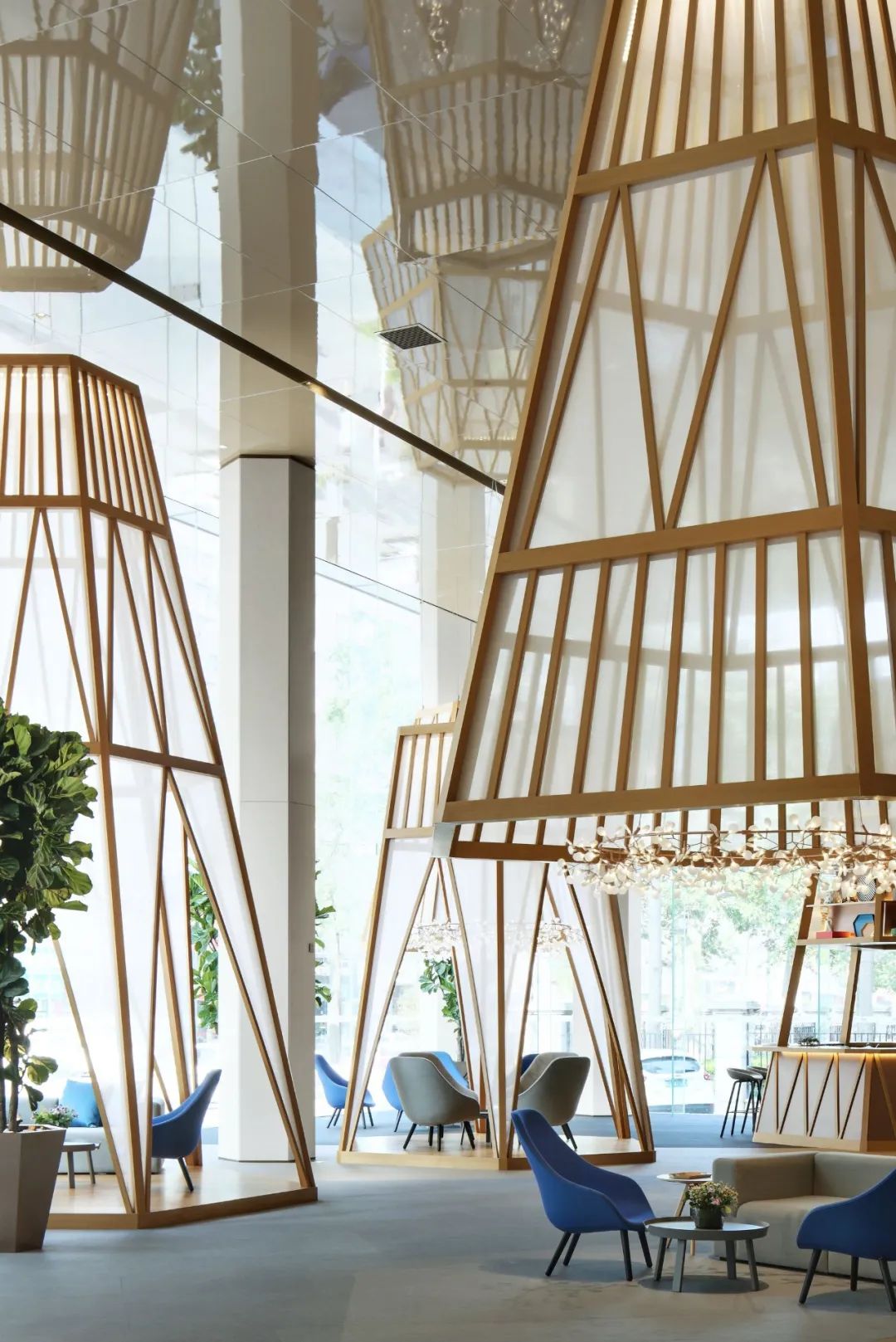
Dongguan Inmost Mansion Sales Center ©Ingallery
#03
Polish the plate you are good at
FRAME:Describe some of your most recent works.
Recently, we completed a private art-filled penthouse in Zhejiang for a female client, who honors fashion, a free lifestyle and pursues the harmonious aesthetics of art. She hoped her third residence to be an art space that combines multiple functions, including a private vacation home, a place for receiving and gathering guests, and a venue for communication and entertainment.
Occupying an area of 650 square meters, the project is a large single-floor flat formed through removing the partition walls of two existing apartments. For this reason, the layout of the new flat appeared somewhat rigid, fragmented and scattered, which posed a challenge to our design. From a broad perspective, we thought it was hard to make many structural breakthroughs in the existing architectural framework. Therefore, we shifted our thoughts and efforts to create highlight at visual level.


Zhejiang Private Penthouse Zhu Di @ SHADØO PLAY
We arranged varied asymmetric and free forms in the space, to divert the attention from the spatial structure. For instance, the four columns at the middle of the living room are constructed into different forms, to break visual monotony; deconstruction methods are adopted to create arc-shaped walls, which plays down the stiffness of the original space; a new spatial pattern is shaped by connecting the first and second floors through a structural spiral staircase; a skylight is carved out above the corridor on the second floor, to create a large atrium that brings daylight in, while making those fragmented small structures smooth, transparent and complete.

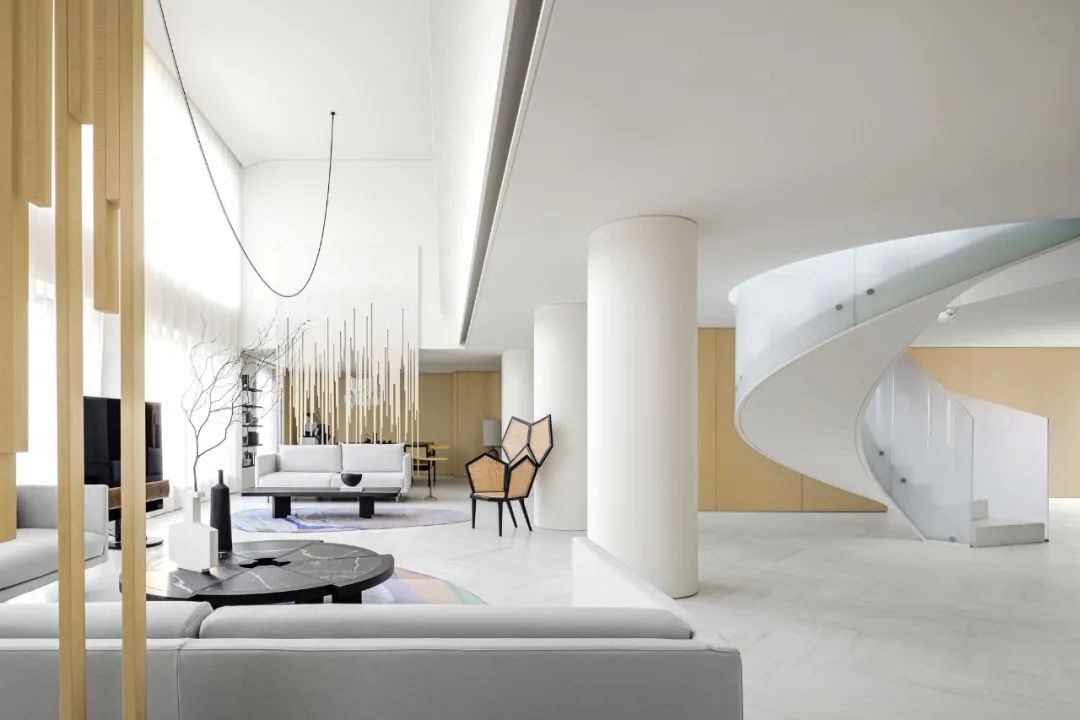
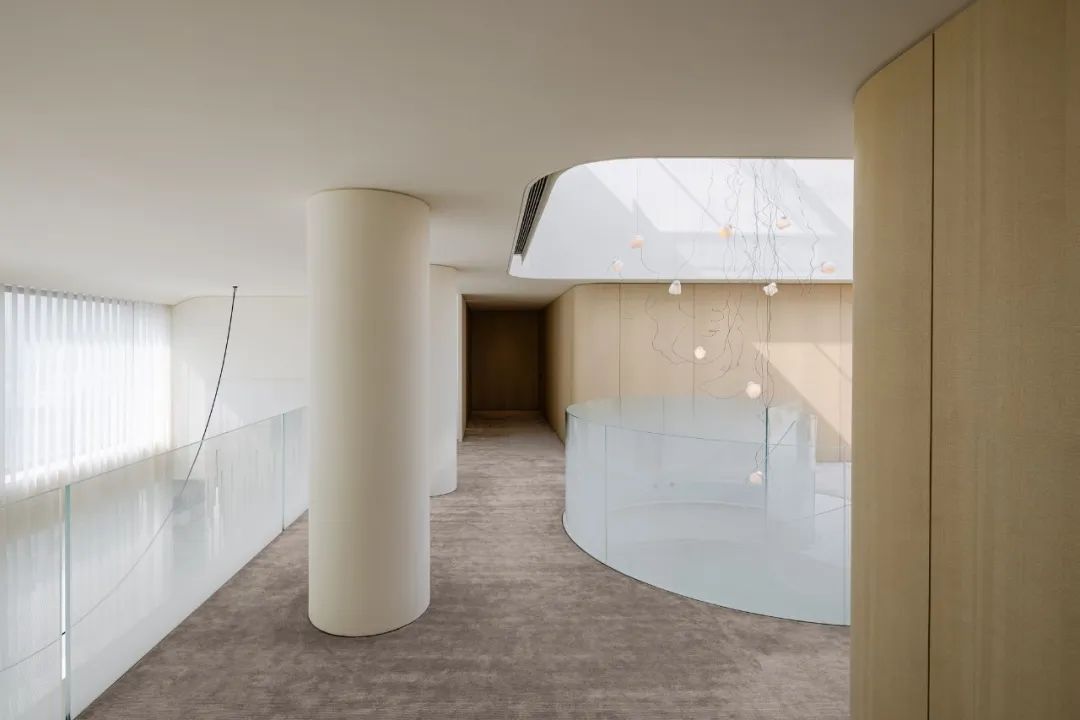
Zhejiang Private Penthouse Zhu Di @ SHADØO PLAY
Artworks and furnishings brought in the residence are all collectible handicrafts, and hanging paintings are also created by famous designers from home and abroad. For example, the 3D artwork by Patrick Hughes, the wooden lacquer carving by artist Jacky Tsai, who is good at combining traditional Oriental artistry and imagery with Western Pop Art, and the creative Post-it chandelier from Ingo Maurer. All these artistic works are introduced to suit the unique aesthetic taste of the residence owner.
For this project, we recreated the spatial order by various techniques such as superposition and reorganization. We also repeatedly adjusted our design based on balancing aesthetic intuition and model verification, thus creating a private art-filled vacation home beyond a certain concrete theme and real life.

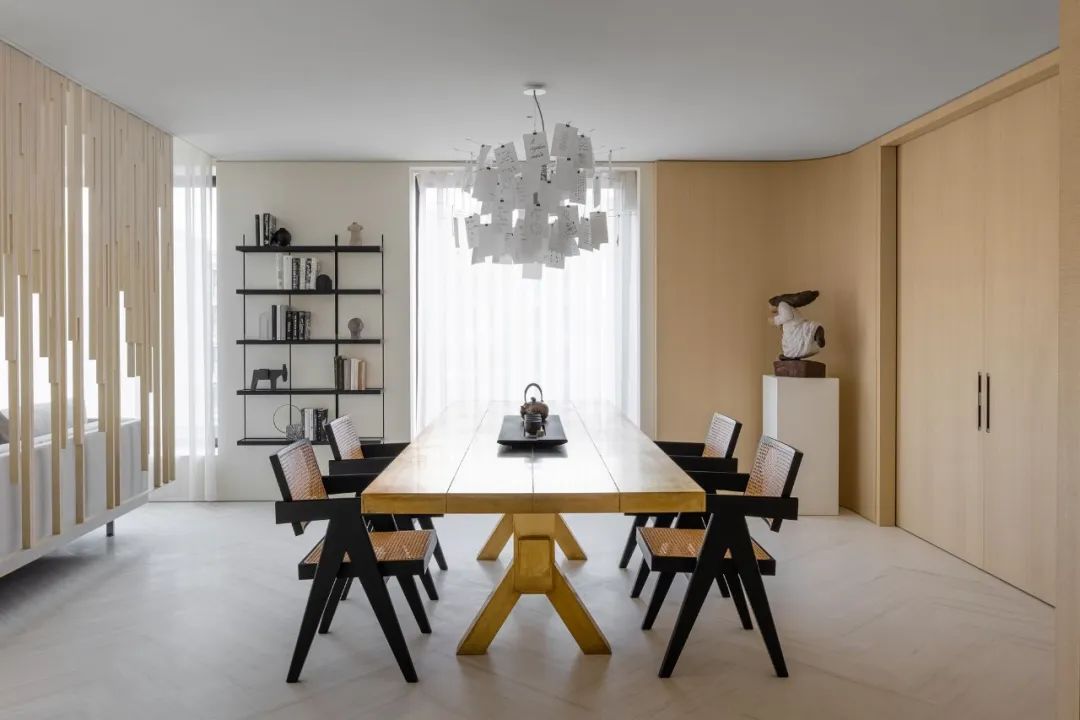
Zhejiang Private Penthouse Zhu Di @ SHADØO PLAY
FRAME:What would your advice be to young designers in China and abroad as they navigate the industry in uncertain times?
Only one suggestion — give full play to and maintain your strengths and polish what you do best to the extreme. This is what I value most and think is important.
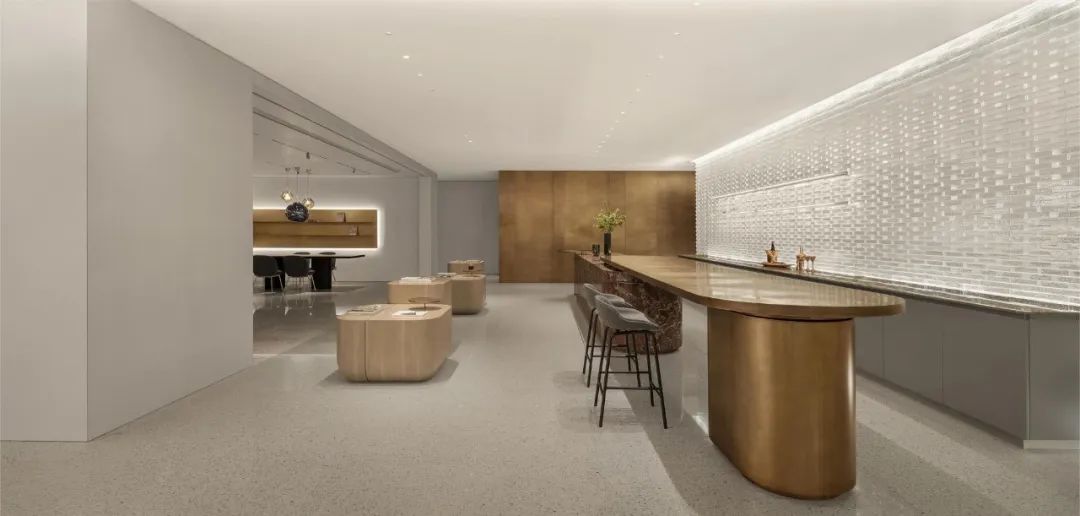
The Mixc VIP Lounge, Shenzhen ©Qin Zhaoliang
